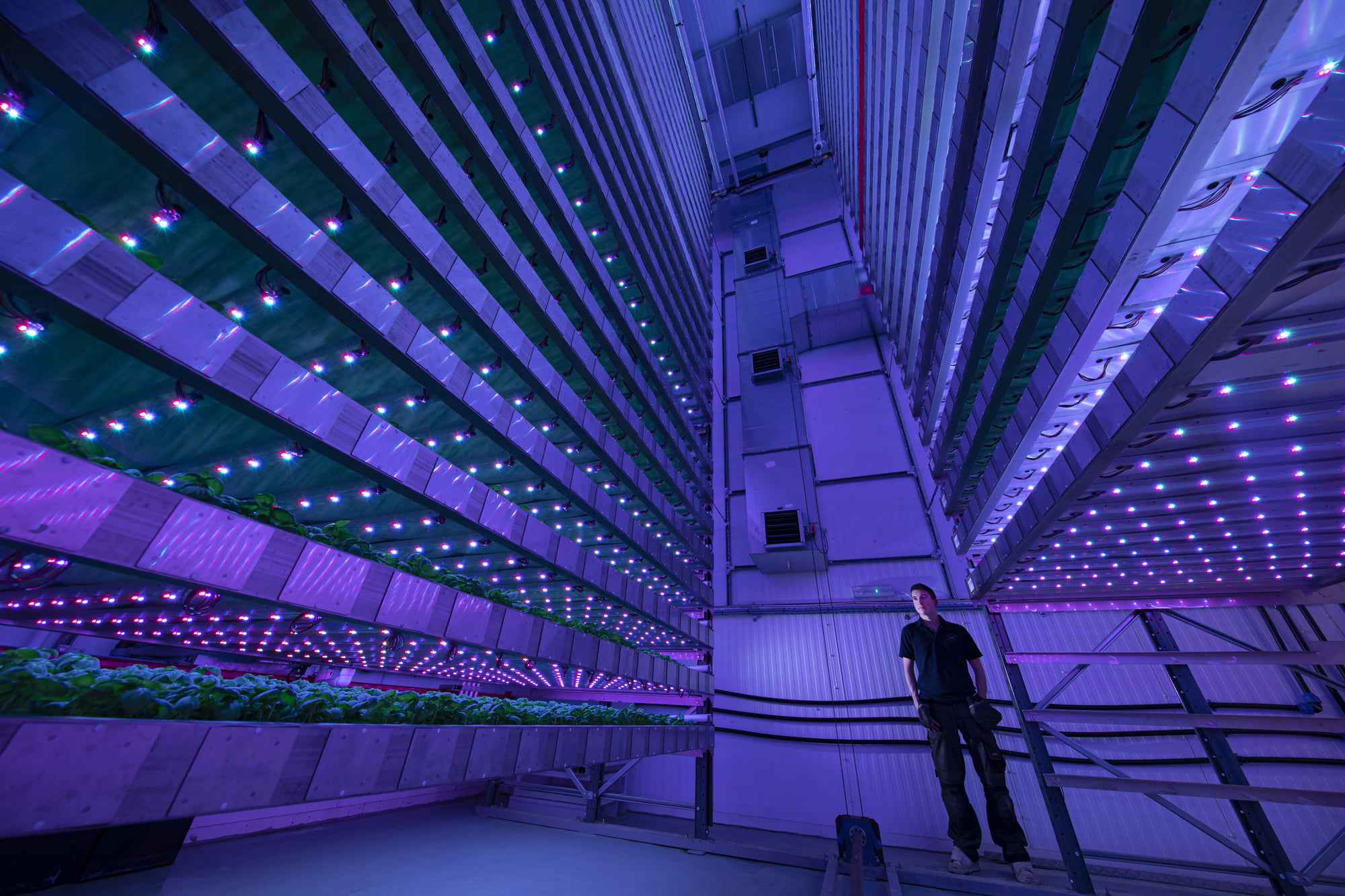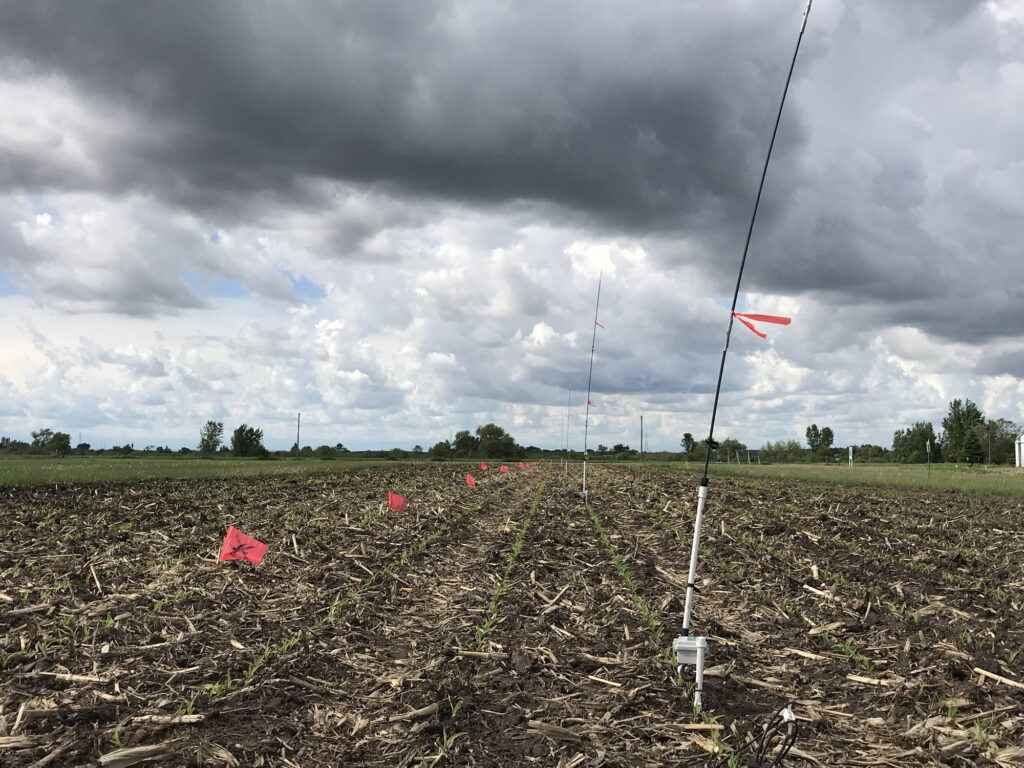
Intelligent Growth Solutions, based in Dundee, UK, has refined its modular system over the last ten years, consisting of pairs of Growth Towers which come in 6, 9, or 12-meter-high variants.
New AG International’s Editor-in-Chief, Luke Hutson put the questions to Dave Scott, CTO and Founder to learn more.
Sensing the soil, and more
A look at global testing and development of the newest soil, plant, tree and pest sensors.
By Treena Hein.
Knowledge is power, and as farmers around the world are able to get more data on their soil conditions, they gain so much more power to achieve better eventual harvests. Farmers who irrigate need accurate soil moisture data in order to avoid under- or over-irrigation. Dryland farmers also need to understand plant-available moisture levels because, for example, good moisture availability can prompt the application of added fertilizer to boost yields. Freelance writer Treena Hein investigates.
Soil probes are expanding in capability and some systems are now able to measure salinity, nutrient levels and temperature in addition to moisture. Some, like those of Quebec, Canada-based ChrysaLabs, can provide almost real-time measurements of moisture and nutrients. Their probes are currently being tested in collaboration with Olds College in Alberta, Canada for moisture sensing in western Canadian soils, which differ significantly in soil type profiles compared to those in Eastern Canada. At the Tasmanian Institute for Agriculture, a joint partnership between the Department of Primary Industries, Parks, Water and Environment and the University of Tasmania, Research Fellow Dr. Marcus Hardie and his colleagues continue to develop various sensor technologies. The ‘Smart’ Shovel’ can sense soil moisture, salinity and compaction. Hardie’s team is also working on ‘Below Ground Sensor Data Transmission’ so that sensors can be fully buried without risk of damage from machinery etc., with commercialization expected by the end of the year.
At the same time, Hardie and his team compare their sensors to existing ones, and have found that differences in sensor accuracy “can be massive.”
“The issue of accuracy needs to be carefully unpacked as there are different issues which may or may not be important,” he explains. “For example, many growers use the patterns in the data to decide when to irrigate, and thus they need regular data (hourly or every few hours), and actual numbers aren’t that important. For them, issues with temperature fluctuations and electronic drift are more important, as is the quality of data connections. But for growers who use the actual numbers and tend to take infrequent measurements, accuracy is quite important.” Actual numbers also matter if you’re using the sensors to determine when to irrigate as opposed to how much to irrigate.
Dr. Vasudha Sharma, extension irrigation specialist at the University of Minnesota in the U.S., has also found a wide range in sensor accuracy and agrees that degree of accuracy required depends on what information the farmer needs. She has been testing soil moisture sensors since 2019 and will be comparing five this year. “There is a lot of research going on into accuracy,” she says, adding that “salinity can interfere with the accuracy of electromagnetic sensors, so farmers using those sensors in that situation will need to do site-specific calibration using soil samples taken to a lab.
To review, soil sensors, attached to probes, are either put in for the entire season (‘in situ,’ installed via an access hole usually with multiple sensors at different depths on the probe), or moved around (more expensive) by being poked into the soil. Both have limitations.
In addition, sensors can measure moisture in two ways. “Electromagnetic conductivity sensors directly give soil volumetric water content, are more accurate and behave better in sandy soils,” Sharma explains. “They currently cost about USD$350. The other category costs about $50 each and measure moisture indirectly by measuring soil tension (how much the roots have to work to extract water) and converting that to soil volumetric water content. Some are better than others in terms of that conversion. In sandy soils, some skill is needed in ensuring good soil contact.”
Daniel Stefner, a research technician at Olds College, has been testing sensors for several years in collaboration with colleagues at Alberta Innovates. “We focus on not on accuracy but on connectivity and usability to measure moisture, salinity and temperature,” he explains. “Data connectivity is a big issue in Canada. We’ve tested close to 40 probes at this point from five companies for moisture, and we’re now looking at how the sensors can be used to get a ‘water infiltration picture’ for fields versus pasture, different types of pasture, and so on. For soil nutrients, testing is ongoing as sensors become available. We’ve looked at dozens of sensors from four different companies.”
Advice for farmers
As with implementing any technology, farmers need to know what information they require from soil sensors that might impact a financial decision, and also do their homework on what’s available, but here is some specific guidance.
“For those with a small budget, install a few low-cost sensors in your field for two or three seasons, following recommendations of extension specialists or your agronomist for the right depth depending on your soil and your crops,” says Sharma. “Get to know your soils, how fast they dry out. Track humidity and temperature daily as well to make yourself a rudimentary model to follow. But if you have the money, invest in reputable electromagnetic sensors that can measure moisture and nutrients and temperature with a data logger. The more information you have, the better.”
Stefner suggests farmers understand level of connectivity required for various systems, and also that they honestly assess their own IT skill level in setting up and using a particular system. He adds that simplicity is important “because you won’t use it or won’t use it as much if it’s frustrating. Some sensors work with cell networks but if you have no coverage, a private LoRaWAN (low range wide area network) that you have to set up might be affordable and worthwhile.” (In 2021 in the journal Sensors, a team from Italy published their results in creating a low-power wireless LoRaWAN network using commercial components and free or open-source software libraries. It demonstrates “the feasibility of a modular system built with cheap off-the-shelf components, including sensors.”)
Hardie agrees that “it’s not always about the sensor, it’s often more important to get the back-end sorted. That is, how are you going to access and store the data?”
He adds that if your irrigation system is limited in how much you can irrigate, or you can only apply irrigation at a single rate for a whole field, focusing on when to irrigate is the priority. Sensing should focus on the wettest and driest parts of the field. Hardie also stresses that “what’s commonly not understood is most growers use sensors to inform them when they don’t need to irrigate, rather than when they do need to irrigate.”
Sensing in future
Looking forward, Stefner expects sensor technology to become simpler with more capabilities, but emphasizes that it’s up to growers to build their knowledge, both of their fields and their ability to use the data to make better economically-driven decisions.
All agree that connectivity is sure to progress in the years to come. Sharma says that “in five years, I see farmers being able to see their data online and not have to go to the field to download it. This is advancing very fast. Cellular connectivity is increasing in some parts of the world, but I think the soil sensor industry is moving towards use of satellites because there are areas where there won’t be cellular coverage for the foreseeable future.”
Hardie doesn’t think there will be much new innovation in sensors themselves, and notes that current sensor technology is 20 years old. The “bigger” issue for growers, he says, “is whether to focus on using soil sensors or plant sensors to decide when and how much to irrigate.”
https://informa.turtl.co/story/new-ag-intl-eng-septoct-2022/page/6/23
